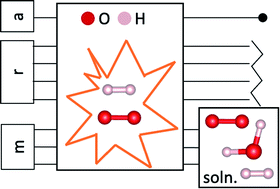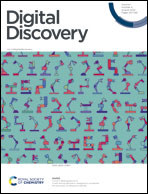How a quantum computer could accurately solve a hydrogen-air combustion model†
Abstract
A quantum circuit method for modeling steady state behavior of homogeneous hydrogen-air combustion is presented. Extensive empirical testing has pinpointed the factor determining accuracy of quantum circuit calculations. Specifically, the accuracy of the Harrow, Hassidim and Lloyd (HHL) algorithm has been benchmarked using Qiskit simulations. For random linear systems that were constricted by various criteria, the quantum solution was compared to the classical solution. The criteria investigated include orthogonality, condition number, orthonormality, angle between vectors within the linear system, diagonality, and the angle between the solution vector and the right-hand side (RHS) vector. The results of these rigorous tests show that the single most powerful factor in accuracy is the angle between the solution vector and the RHS vector. This insight was used to inform the preconditioning of two reduced models of hydrogen-air combustion. These models have been compared in terms of accuracy and degree of utility in terms of the physical system. This application area could exploit a quantum advantage via the poly-logarithmic scaling of HHL.



 Please wait while we load your content...
Please wait while we load your content...